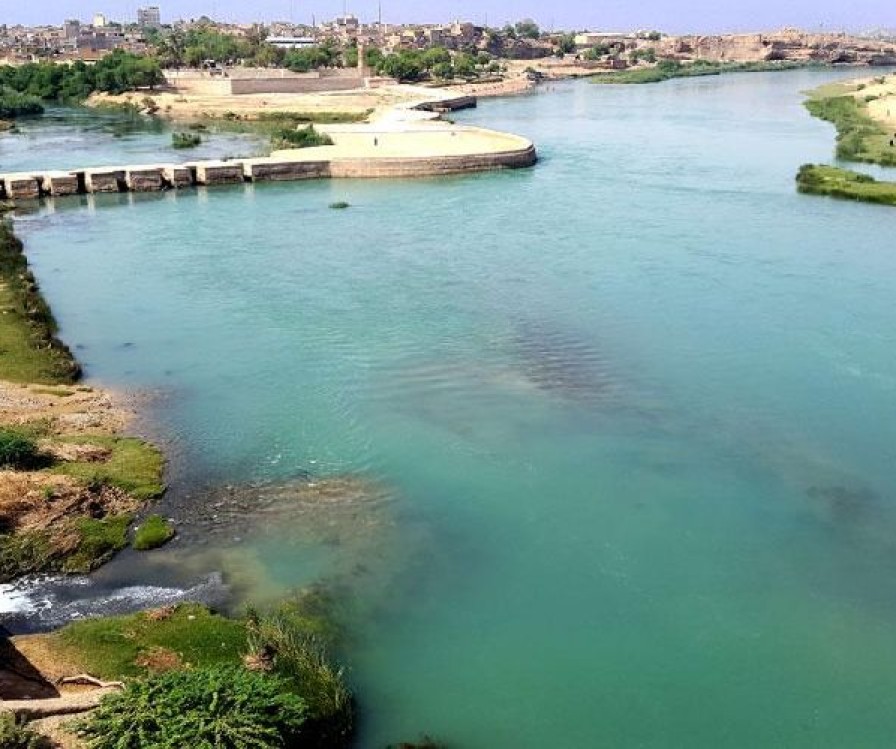
Mizan Dam
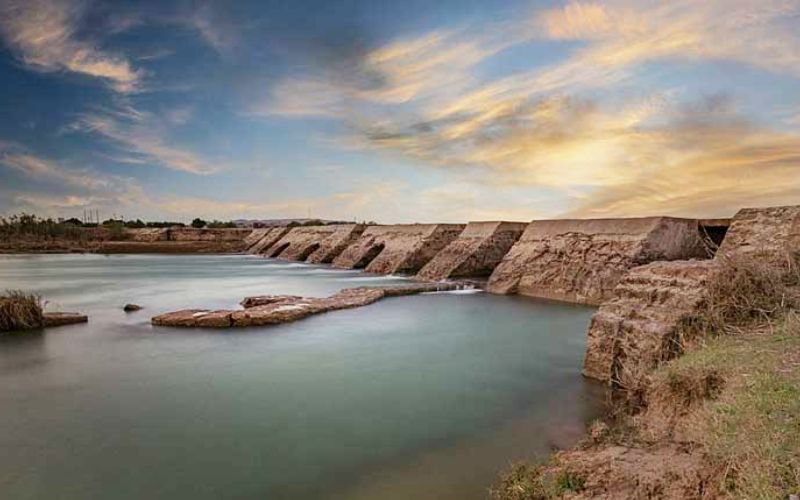
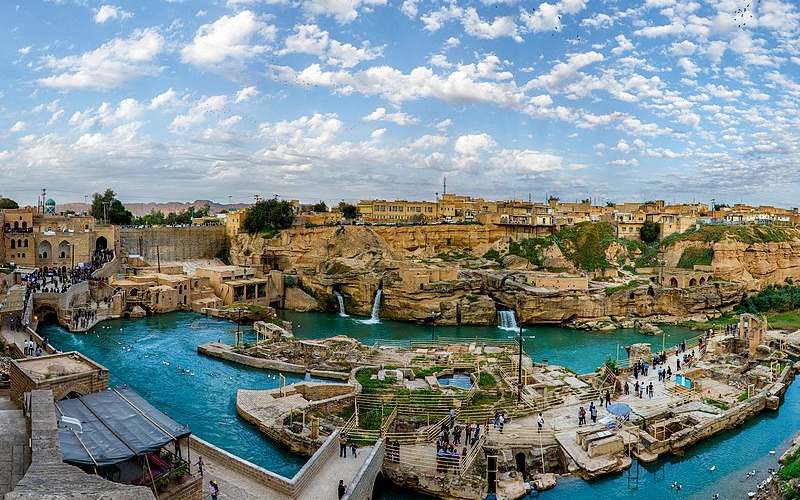
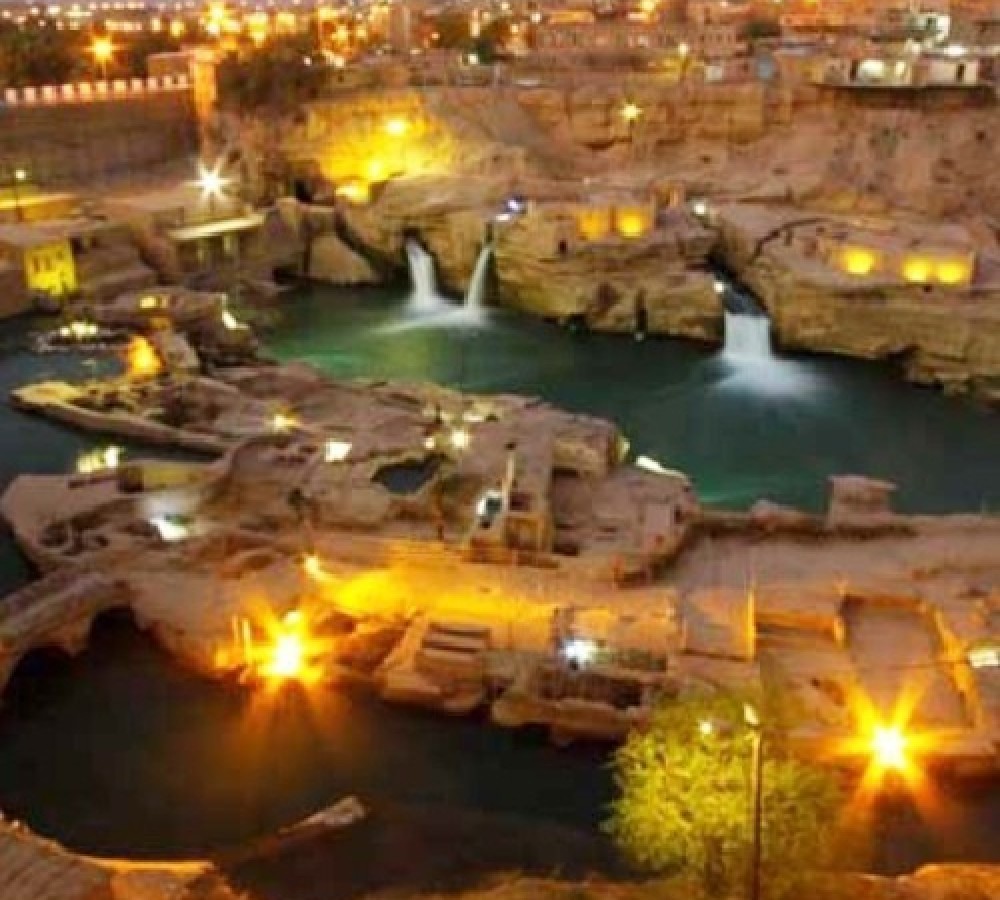




Band-e-Mizan
Mizan Dam is a hand-built structure located in Shushtar, constructed by Iranian engineers during the Sassanid era. It is still standing today. Historians attribute the construction of this dam to Shapur I, the Sassanid king. On May 29, 1999, the Mizan Dam was officially registered as a National Heritage Site of Iran under registration number 2331, recognized as one of the most beautiful and significant monuments in the country.
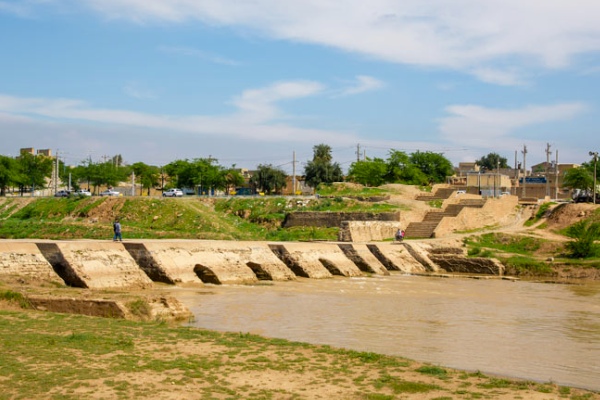
In 2009, along with 15 other historic structures in Shushtar, the dam was inscribed as part of the Shushtar Historical Hydraulic System in Khouzestan on the UNESCO World Heritage List under criteria (i), (ii), and (v) during the annual committee session in Seville, Spain. It became Iran’s tenth entry on the list, registered under number 1315. This dam is ingeniously designed to divide the flow of the Karun River between the Gargar and Shatit branches in a 1:2 ratio. Locally, the Gargar River is known as “Two-Dang” and the Shatit River as “Four-Dang.” The dam’s materials include cut stone from Shushtar and a traditional mortar called Sarooj. Thanks to the use of these durable materials and highly precise engineering, the dam remains intact and functional even after centuries, a testament to the sophistication of ancient Iranian hydraulic engineering. Mizan Dam is one of 13 key structures forming the Shushtar Hydraulic System, and arguably among its most vital elements.
To understand its importance, one need only look at Shushtar’s history. The destruction of this dam would have meant poverty and hardship for the region, while its stability and continued operation, alongside other structures, provided irrigation for 40,000 hectares of agricultural land.
The dam consists of several openings, the most important of which plays a crucial role in regulating the water flow between the two river branches. If the discharge of the Gargar branch exceeds one-third of the total, the excess is diverted to the Shatit branch—and vice versa. This passive, automatic balancing mechanism is a masterpiece of ancient water management.
Ancient Iranians possessed remarkable knowledge in hydraulic construction. The foundation of Shushtar’s water system dates back to the Achaemenid era, when even then, Iranian engineers had sufficient expertise in designing and building dams and canals. After the Roman Emperor Valerian was defeated by Shapur I, the Sassanid king is said to have required, as a condition of Valerian’s release, the completion of a bridge—named after the event—which was finished in just two years, and stands as a marvel of engineering both then and now.
The Mizan Dam was constructed using cut stones placed by skilled Iranian stonemasons, bonded with Sarooj, a traditional waterproof mortar. At the time, cement did not exist, and Sarooj was used for both bonding and waterproofing. Sarooj is a unique, historical material, somewhat like cement but chemically and structurally different. It’s not based on a fixed formula—instead, its ingredients and ratios were adapted to local environmental conditions, available resources, and the intended structure. It behaves like an epoxy gel, changing based on formulation.
Nestled in the heart of Khuzestan province, Iran, the UNESCO-registered Shushtar Historical Hydraulic System stands as a testament to the ingenuity of ancient Persian engineers. At the core of this marvel lies the Band-e Mizan Dam, an ancient structure that has played a pivotal role in regulating the flow of the mighty Karun River for thousands of years. The survival of this and other structures within the system, like Band-e Mizan, is largely due to the use of a traditional, water-resistant mortar known as "Sarooj."
Sarooj is a traditional, waterproof mortar that was a hallmark of ancient Iranian architecture. It was commonly used in the construction of bridges, water reservoirs, and ice houses. Unlike modern cement, Sarooj is "alive." Its hardness continuously increases over time by absorbing moisture, making it stronger with age. This unique property is why structures built with it have endured for millennia, with remnants still visible today in dams like Band-e Mizan.
Sometimes, additional ingredients like egg yolk, milk, or fruit juice were added. Fruit juice, in particular, acted as a catalyst to control the setting time, allowing ancient builders to manage the construction process with precision—a level of control that is difficult and costly to achieve even with modern materials.
Sarooj was produced in two primary ways:
The Band-e Mizan Dam itself is a marvel of passive engineering. It was intelligently designed to divert the Karun River into two main branches as it enters the Khuzestan plain. The dam's non-active design ensures a proportional distribution of water, directing water into two specific channels:
The Shushtar Historical Hydraulic System, including the Band-e Mizan Dam, is recognized as a masterpiece of creative genius. It's a must-visit for any traveler to Iran's Khuzestan province. The immense scale and sophistication of these structures have captivated travelers and historians for centuries. The famed explorer Ibn Battuta, who visited the area, praised the grandeur of Shushtar's bridges and its learned scholars. Today, we invite you to discover this unparalleled historical site. It's an opportunity to step back in time and witness the genius of a civilization that harnessed the power of water to sustain life and agriculture in a semi-arid landscape. We look forward to welcoming you to Iran, Khuzestan province, and Shushtar to share a piece of this unique and historic land with you.
Contact Us
+989054577261